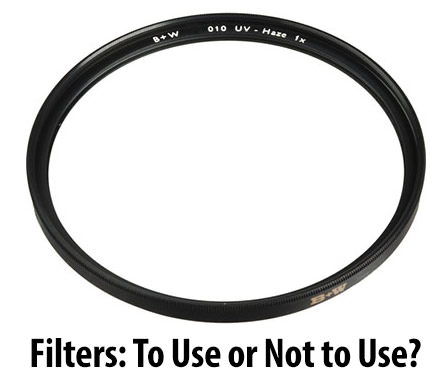هل تؤثر الفلاتر على دقة العدسات؟
Do Filters Affect the Resolution of Lenses?
تمامًا مثل المناقشات القديمة "الفيلم مقابل الرقمي" أو "نيكون ضد كانون"، غالبًا ما تخلق مرشحات العدسات مناقشات لا نهاية لها على الإنترنت. يجادل بعض الأشخاص بأنه لا ينبغي أبدًا استخدام المرشحات الواقية، نظرًا لأن قطعة أخرى من الزجاج أمام العدسة تقلل من الدقة وتؤكد على المشكلات البصرية الأخرى مثل الظلال / التوهج، بينما يرى آخرون أن المرشحات تسهل حماية العنصر الأمامي للعدسة وتسهيل تنظيف هذا العنصر. أنا شخصياً أوصي باستخدام المرشحات الواقية منذ سنوات، طالما أنها ذات جودة عالية. لا يبدو أن المرشحات التي كنت أستخدمها تؤثر على قوة تحليل العدسات التي تم تركيبها عليها، وفي الغالب لا يبدو أنها تؤثر بشكل كبير على الظلال/التوهج أيضًا. بعد أن أمضيت الأسبوعين الماضيين في المختبر لاختبار العديد من العدسات، تساءلت عما إذا كان بإمكاني بالفعل قياس دقة العدسة باستخدام مرشح أو بدونه. لقد قمت مؤخرًا بشراء عدسة مستعملة مزودة بفلتر بلاستيكي رديء، لذلك قررت تشغيل سيناريوهين منفصلين - أحدهما بدون مرشح، والآخر به مرشح B+W عالي الجودة (المزيد عن منتجات B+W أدناه) والآخر به مرشح مرشح بلاستيكي رخيص. وجاءت نتائج الدراسة مثيرة جدا للاهتمام!

Just like the old “film vs digital” or the “Nikon vs Canon” debates, lens filters often create endless discussions on the Internet. Some people argue that one should never use protective filters, since it is another piece of glass in front of the lens that reduces resolution and emphasizes other optical problems such as ghosting / flare, while others argue that filters make it easier to protect the front element of the lens and make it easier to clean that element. I personally have been recommending use of protective filters for years, as long as they are of high quality. The filters that I have been using do not seem to affect the resolving power of lenses they are mounted on and mostly do not seem to heavily affect ghosting / flare either. Having spent the last couple of weeks in a lab testing many lenses, I wondered if I could actually measure the resolution of a lens with and without a filter. I recently purchased a used lens that came with a crappy plastic filter, so I decided to run two separate scenarios – one without a filter, one with a high quality B+W filter (more on B+W products below) and one with a cheap plastic filter. The results of the study came out very interesting!

Do Filters Affect the Resolution of Lenses?
تمامًا مثل المناقشات القديمة "الفيلم مقابل الرقمي" أو "نيكون ضد كانون"، غالبًا ما تخلق مرشحات العدسات مناقشات لا نهاية لها على الإنترنت. يجادل بعض الأشخاص بأنه لا ينبغي أبدًا استخدام المرشحات الواقية، نظرًا لأن قطعة أخرى من الزجاج أمام العدسة تقلل من الدقة وتؤكد على المشكلات البصرية الأخرى مثل الظلال / التوهج، بينما يرى آخرون أن المرشحات تسهل حماية العنصر الأمامي للعدسة وتسهيل تنظيف هذا العنصر. أنا شخصياً أوصي باستخدام المرشحات الواقية منذ سنوات، طالما أنها ذات جودة عالية. لا يبدو أن المرشحات التي كنت أستخدمها تؤثر على قوة تحليل العدسات التي تم تركيبها عليها، وفي الغالب لا يبدو أنها تؤثر بشكل كبير على الظلال/التوهج أيضًا. بعد أن أمضيت الأسبوعين الماضيين في المختبر لاختبار العديد من العدسات، تساءلت عما إذا كان بإمكاني بالفعل قياس دقة العدسة باستخدام مرشح أو بدونه. لقد قمت مؤخرًا بشراء عدسة مستعملة مزودة بفلتر بلاستيكي رديء، لذلك قررت تشغيل سيناريوهين منفصلين - أحدهما بدون مرشح، والآخر به مرشح B+W عالي الجودة (المزيد عن منتجات B+W أدناه) والآخر به مرشح مرشح بلاستيكي رخيص. وجاءت نتائج الدراسة مثيرة جدا للاهتمام!

Just like the old “film vs digital” or the “Nikon vs Canon” debates, lens filters often create endless discussions on the Internet. Some people argue that one should never use protective filters, since it is another piece of glass in front of the lens that reduces resolution and emphasizes other optical problems such as ghosting / flare, while others argue that filters make it easier to protect the front element of the lens and make it easier to clean that element. I personally have been recommending use of protective filters for years, as long as they are of high quality. The filters that I have been using do not seem to affect the resolving power of lenses they are mounted on and mostly do not seem to heavily affect ghosting / flare either. Having spent the last couple of weeks in a lab testing many lenses, I wondered if I could actually measure the resolution of a lens with and without a filter. I recently purchased a used lens that came with a crappy plastic filter, so I decided to run two separate scenarios – one without a filter, one with a high quality B+W filter (more on B+W products below) and one with a cheap plastic filter. The results of the study came out very interesting!



تعليق